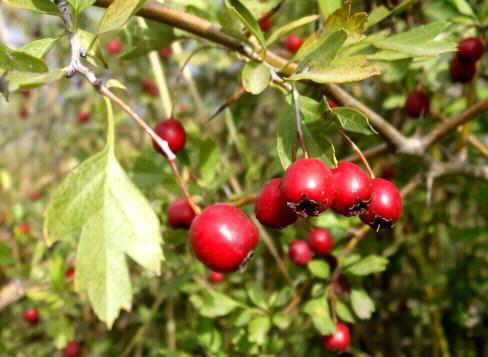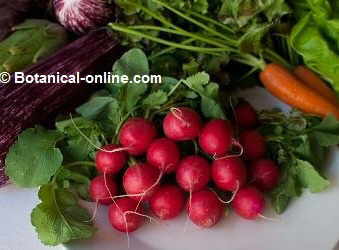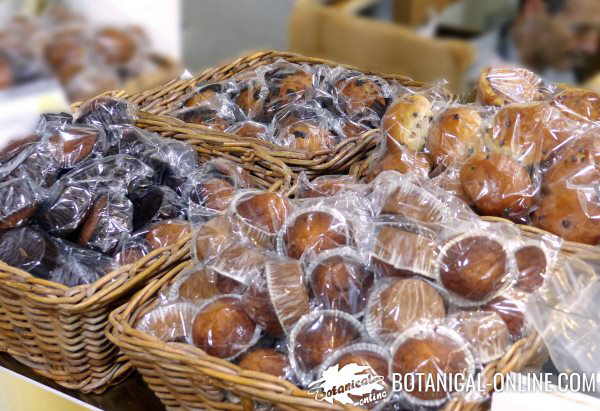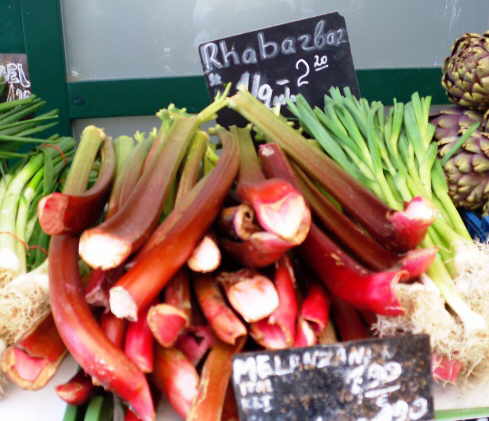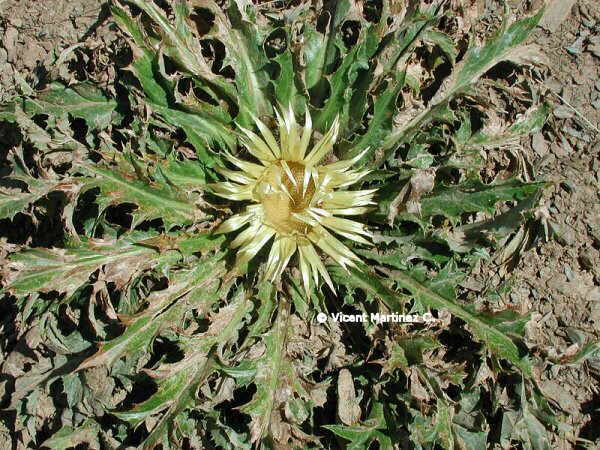Contents
- 1 How to grow leeks
- 1.1 LEEKS CHARACTERISTICS
- 1.2 What are leeks?
- 1.3 Differences between cultivated leeks and wild leeks
- 1.4 Where do wild leeks grow?
- 1.5 History of leeks
- 1.6 Leeks Types and varieties
- 1.7 Leeks. Irrigation and humidity
- 1.8 Leeks uses
- 1.9 Leeks environment and location
- 1.10 Leeks soil and fertilizer
- 1.11 Leeks soil rotation
- 1.12 Leeks rotation of crops
- 1.13 Leeks sowing and planting
- 1.14 How to sow early leeks
- 1.15 How to sow leeks for the winter
- 1.16 How to plant leeks. Earthin up technique
- 1.17 Leeks care
- 1.18 Leeks plagues and diseases
- 1.19 Leeks harvesting
- 1.20 Leeks storing
How to grow leeks
LEEKS CHARACTERISTICS
What are leeks?
A leek (Allium ampeloprasum) is a biennial plant plant of the Liliaceae family, which includes other vegetables as characteristic as onions (Allium cepa) or garlic (Allium sativum).
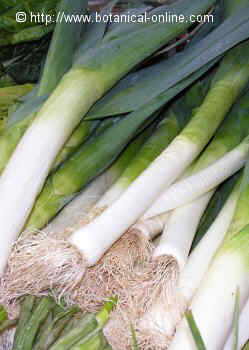
Photo of leeks
In a natural state, wild leeks can measure between half a meter and one meter in height.
Its stems are erect and come from a bulb not too thickened, rather elongated.
Leaves in rosette of dark green color.
Pink or white flowers, in rounded umbels. When they have not matured they are surrounded by a papyrus spathe culminated in a kind of filament. This cover or hood that covers the immature flowers, later it is opened and leaves the flowers free being located to a side of the inflorescence.
Capsule type fruits.
Differences between cultivated leeks and wild leeks
Cultivated leeks (Allium ampeloprasum L. var. Porrum) come from the wild leeks and are characterized mainly by having a very small bulb and the leaves very united at the base forming false thickened stems.
The taste of them is finer than that of the wild ones, which are also edible.
Where do wild leeks grow?
They are found in all temperate zones, growing freely on the edge of fields, on roads or between pastures, blooming from the middle of spring to the beginning of summer.
History of leeks
Coming from the Far East, leeks have been cultivated since ancient times.
There are references to its cultivation in ancient Egypt, although its use was extended among the Greeks and, especially, among the Romans who greatly appreciated this vegetable.
It is known of the great fondness of Nero towards this food, to the point that, according to John Gerard, it was known as Porrophagus, that is to say “he who eats leeks”.
Leeks Types and varieties
* Depending on the growing season
Although it is a biennial plant, it is grown as an annual plant. We have three types of leeks according to the time of harvest:
- Spring leeks: those that are sown at the end of summer, during the month of September and are collected in spring, during the months of April and May. Among the earliest varieties, “Early Market” stands out.
- Summer leeks: those that are sown in winter, during the months of January to March to be collected from spring to summer, during the months of May to June. This type of leeks are those that present a better flavor and a better aroma.
- Leeks of winter: they are the ones that are sown in spring, during the months of April to May and they are collected during the winter, between the months of November and March. Among the winter varieties, the “Winter crop” variety stands out for its great resistance to cold.
* According to thir length , we can distinguish between two types of varieties:
- Long Varieties: Among the main ones we have the varieties Helvetia, Largo de Mezieres, Large American Flag, Alaska or Gennevilliers.
- Semibroad varieties: Some as well known as Nice Green, Malabare, Elephant, Coarse of Rouen, Arctic or Birlette.
Leeks. Irrigation and humidity
Leeks do not need special watering. In places where it rains in a regular way, they do not need any additional irrigation, requiring moderate irrigation in dry places.
Excessive humidity and, above all, waterlogging are very harmful, producing root rot and other fungal diseases such as mildew and rust.
Leeks uses
Leeks are used mainly as vegetables. The stems from the leeks are eaten. As a matter of fact, the stems of the leeks ar not real stems but the base of the leaves that are almost joined.
They can be eaten raw in salads, in soups or you can make cakes or pies with them. The leeks combine very well with other vegetables, especially celery, in the preparation of vegetable broths. They can be obtained in the market fresh or frozen.
Leeks are a very healthy food, rich in sulfur and mucilage, with great nutritional and medicinal properties, so they should usually appear in our healthy diet.
Leeks environment and location
Leeks are very resistant to environmental conditions. They tolerate cold very well, although they prefer temperate climates, with the optimum temperature being between 15 and 22ºC.
Leeks soil and fertilizer
Leeks prefer the not very compact soils, with abundant organic matter and with a good drainage. Its ideal pH ranges between 6.5 and 7.5
Leeks support many types of soil, however they can not tolerate those in which waterlogging occurs, so it is not convenient to plant them in clay soils that are prone to retain too much moisture, especially in winter. Nor do they tolerate saline soils.
In order to develop well, leeks need a lot of organic matter. It is convenient to incorporate manure or compost in the preparation of the soil before planting, which will be carried out during the summer or autumn.
The preparation of the land is necessary both for the addition of organic matter and to make the necessary holes so that the leeks can be buried and get the adequate bleaching so that they can be sold or eaten properly.
The ideal would be to remove the soil to a minimum depth of about 30 cm, which is the depth needed to bury them during summer and autumn. In case of planting them in plain, as we will see later, a good provision of soil will also be needed to be able to earth them up, so the previous task of removing the soil at a good depth is necessary before planting.
When the task of soil preparation is done, add manure or compost. Ideally, add about three or four fingers of mature compost or manure that should remain under the soil at about 25 or 30 cm. (About 180 kg per 1002). Nor should you be exaggerated in the addition of organic matter, since an excessive amount of it can promote too high development of the plant that will prevent them from remaining standing.
In addition to the organic fertilizer added during the preparation of the soil, it is important to add compound fertilizer about 15 days before planting.
Leeks soil rotation
It is important not to grow leeks on the same soil until four years have passed.
Leeks rotation of crops
Leeks should not be planted in soil where cabbages or potatoes have been previously planted. However, it is very appropriate to associate it with chard, carrots, beets, lettuce, onions or fennel.
Leeks sowing and planting
The period of planting and harvesting the leeks usually lasts between 5 and 6 months. Depending on the moment in which we want to collect them, sowing and planting should be done.
How to sow early leeks
If we want to obtain early leeks, it is necessary to carry out the sowing during the winter months. For this we must plant the seeds at the end of January in a greenhouse in a hot nursery at a temperature of about 13ºC (Leek seeds can only germinate with a minimum temperature of 7ºC).
When the seeds have germinated and the seedlings can stand erect, they will be transplanted in trays at a distance of about four fingers. The trays should be kept in the greenhouse at the same temperature until March.
In March, the trays will be placed in a cold drawer in order to get used to lower temperatures prior to the plantation work.
At the end of April they can be planted abroad.
How to sow leeks for the winter
The plantation should be done during the month of April outside . For this we will place the seeds in furrows to a finger of depth.
The grooves should maintain a distance, more or less, from each other.
When the month of May arrives, the clarification of the seedlings will be made, leaving a distance of about 3 cm between them. The plantation will take place at the end of May or during the month of June.
How to plant leeks. Earthin up technique
Regardless of the planting season, the planting will take place when the plants are about 20 cm high and about 1 cm in diameter. The plants will be placed at a distance of about 20 cm from each other, aligned in rows separated by 80 cm. Maintaining this distribution, planting can be carried out in two different ways, depending on the depth of planting:
- Planting in holes: Make holes one foot deep and about four fingers wide. Inside the plant will be introduced and the hole will be filled with water, without adding soil. After a few days, when the plants have taken root, soil will be added to the stems to cover the holes and hold the soil. In this way, the stems grow inside the holes and the whitewashing occurs when the outside light does not reach them. If you want to lengthen the whiteness of the stems you can add soil to them as they increase in height. This process is known as earthing up.
- Plantation in plain: The plantation is carried out without making deep holes. The seedling is placed inside holes between 5 and 8 cm. Subsequently, soil is added around it so that it is well fixed. With this technique, to achieve the whitewashing of the stems, it is necessary to plant the plant as it grows, that is to say, soil is progressively piled up around the stem, so that only the upper part of the leaves protrudes from the piles.
To achieve a cleaner crop, free of soil, some leek producers prefer to place some cardboard cylinders around the plant.
Leeks care
In addition to progressive earthing up, the main maintenance tasks of the leeks are mainly focused on the weeding of the soil to keep it free of weeds and soil aeration.
Under normal rainfall conditions, the leeks do not need any additional irrigation. Only in dry weather should an additional weekly watering be provided at the rate of three liters of water per meter of furrow.
Leeks plagues and diseases
The main pest of the leek is the root-feeding weevil larvae and the onion beetle, which eats the leaves producing large holes. The presence of thrips should be monitored. Some worms can also attack the roots or bulbs.
Under the right conditions, leeks are very resistant to diseases. In conditions of water stagnation or too much moisture, they can develop some fungal diseases such as:
- Downy mildew
- Rust
- Botrytis
- Sclerotinia
- Alternaria
Leeks harvesting
Leek harvesting takes place after about half a year after having sown. This is done when the plant is well developed and the false stems have reached a height of about 20 cm.
To extract them from the ground a pitchfork is used.
Once extracted, it is convenient to eliminate the roots with a pruner and cut the tips of the leaves.
Later, they are joined and tied forming bunches.
Leeks storing
Preserved in a cool and dry place, they can last up to a couple of days.
When properly stored in a cold store, they can last up to 2 or 3 months.
![]() More information on leeks.
More information on leeks.


